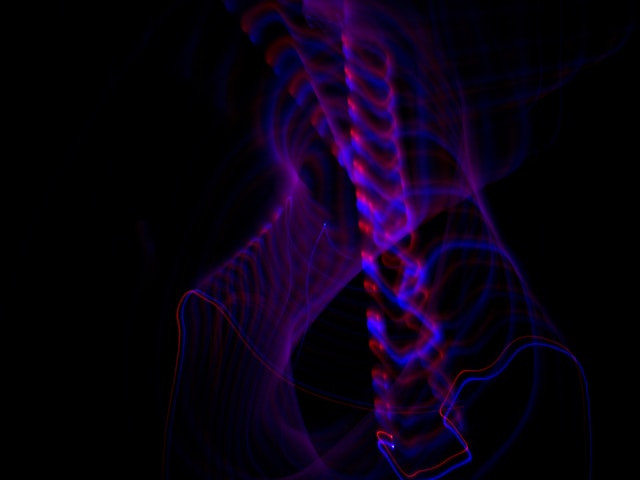
Whiplash often strikes in a blink—an unexpected rear‑end collision or a hard foul on the basketball court—yet the lingering ache can dominate life for months. What turns a brief jolt into long‑term trouble is usually not the bruised muscle itself but how the injury distorts spinal alignment in the cervical spine. When vertebrae lose their natural C‑shaped curve, delicate sensors misread body position, muscles splint, blood flow wanes, and pain signals stay switched on. The key to becoming an active partner in your recovery is to grasp how spinal alignment is lost, why it slows healing, and what you can do to restore it.
1. Spinal Alignment Changes During Whiplash Trauma
High‑speed imaging shows that in the first 150 milliseconds after impact, the lower cervical vertebrae snap into extension while the upper vertebrae flex, creating an “S‑curve” that flattens or reverses normal lordosis by 12–15 degrees. Ligaments such as the anterior longitudinal and alar fibers stretch past their elastic limit; discs bulge minutely; and tiny positional faults emerge between vertebrae. These faults are minor—sometimes only a millimeter—yet disturb mechanoreceptors that regulate muscle tone. Stabilizing muscles like the longus colli shut down, while superficial muscles overwork to hold the head upright. The immediate result is stiffness; the longer‑term consequence is a body that “memorizes” faulty spinal alignment, laying the groundwork for chronic myofascial pain and cervicogenic headaches.
2. Why Restoring Spinal Alignment Accelerates Healing
Correcting the cervical curve does far more than relieve discomfort. When spinal alignment is restored:
- Joint mechanics normalize. Facet joints glide instead of jamming, discs share loads symmetrically, and cartilage receives the nutrient‑rich fluid it depends on for diffusion‑based nourishment.
- Ligament stress drops. Returning vertebrae to their neutral arc slackens overstretched anterior tissues, reducing inflammatory chemistry and allowing collagen fibers to remodel in orderly patterns.
- Neuromuscular control resets. Accurate joint position signals reactivate deep stabilizers that dampen micro‑motions responsible for ongoing irritation.
Clinical research underscores these points. One randomized 2024 trial compared 59 patients receiving three sessions of cervical-specific adjustment to 60 patients who completed a 20‑visit conventional strengthening plan. The adjustment group doubled the range‑of‑motion gains and reported larger pain reductions, outcomes that paralleled radiographic improvement in spinal alignment. Meta‑analyses of deep‑neck flexor programs show similar patterns: when stabilizer muscles are retrained under guidance, pain and disability scores fall more sharply than with general exercise alone.
3. Evidence‑Based Methods to Regain Spinal Alignment
Reversing misalignment requires a blend of clinic‑based interventions and self‑directed exercise. Below are the most researched techniques:
- Upper‑cervical specific adjustments. Precisely vectored, low‑force impulses realign the atlas (C1) and axis (C2). Minor corrections can yield global posture changes because these vertebrae influence the entire cervical chain. Observational data in chronic whiplash patients report meaningful pain relief within four visits and improved joint‑position sense.
- Cervical extension traction. Programs such as Chiropractic BioPhysics gently and sustainably extend the neck using seated or supine devices. Over ten to twenty sessions, viscoelastic creep lengthens shortened anterior tissues while posterior musculature relaxes, producing average lordosis gains of 10–15 degrees.
- Guided deep‑neck flexor retraining. Exercises like chin tucks against a pressure biofeedback cuff reactivate the longus capitis and longus colli without engaging painful superficial muscles. When patients receive real‑time feedback from therapists or wearable sensors, endurance and proprioception improve markedly.
- Thoracic mobility and scapular strengthening. A stiff mid‑back forces the head to crane forward, so therapists pair thoracic extension drills—foam‑roller open books, seated towel lifts—with rows, reverse flys, and wall angels. By anchoring the shoulder girdle, these movements support durable spinal alignment in the neck.
- Smart, short‑term bracing. A rigid cervical collar can reduce sharp pain during the first 48 hours, but it delays muscle reactivation if worn longer. Modern practice favors light activity‑based supports such as kinesiology tape, which remind patients to maintain alignment without immobilizing them.
4. Daily Habits that Protect Spinal Alignment
Therapy sessions succeed only if the gains survive the other twenty‑three hours of the day. Adopt the following strategies to defend healthy spinal alignment at work, in transit, and during sleep:
- Desk ergonomics. Position the top third of your monitor at eye height and keep it an arm’s length away. Every 20 minutes, perform a five‑second chin tuck, roll your shoulders back, and stretch your chest. A laptop stand or external keyboard may be essential to avoid the downward gaze that causes flexion.
- Smartphone hygiene. Holding a phone at waist level forces up to 60 pounds of equivalent load onto the cervical spine. Raise the screen to eye level or use voice commands; set screen‑time alerts that cue posture resets.
- Driving posture. Align the headrest with the base of your skull and recline the seat no more than 100 degrees. Tilt mirrors slightly upward so slouching makes visibility uncomfortable—an instant nudge to sit tall.
- Sleep support. Choose a medium‑firm mattress and a pillow that maintains the natural curve. Back sleepers often thrive on contoured memory‑foam designs, while side sleepers need a taller edge to fill the shoulder‑to‑ear gap. Replace pillows yearly; compressed foam subtly alters spinal alignment.
- Strength maintenance. Two or three resistance‑training sessions weekly—focused on scapular retractors, posterior chain, and core stabilizers—counter the rounded‑shoulder pattern common after whiplash. Aerobic exercise boosts cervical blood flow, aiding tissue repair.
Understanding the mechanics of spinal alignment and applying evidence‑based strategies consistently gives your cervical spine the stability and metabolic environment it needs to heal fully. With patience and informed effort, the neck that once protested every turn can again move freely, supporting a life no longer defined by whiplash.